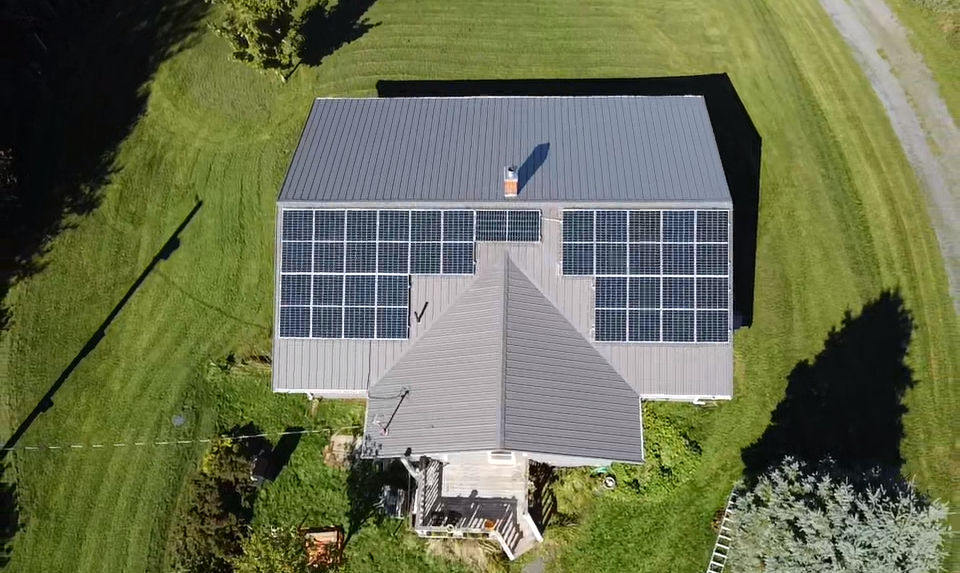How do we determine what system size is right for your home? There’s a lot we need to look at to make sure the system we’re installing for you matches your consumption needs and is economically beneficial. We want you to get the best out of your system, and finding the perfect system size is the first step to ensuring you’re ready to jump-start your renewable energy journey.
Factors That Affect Your System Size
Usage: The first and most important step is to look at your usage history over the last 12 months to identify your consumption patterns. This helps us see the full picture of your energy usage since it can vary significantly throughout the year. Generally, you’ll have higher power bills and usage during the summer and winter as you’ll need more out of your heating and A/C units. Our goal is to design you a system that can produce enough electricity to meet your yearly consumption needs.
Productive Roof space: Your productive roof space consists of the parts of your roof that are optimal for solar production. You wouldn’t want to put a bunch of panels in places that have a lot of shading or obstructions. We would also need to look at your roof’s orientation and angle to check if it’s in a good position for solar production. The best case scenario is to have a south-facing roof angled between 30-45 degrees.
Location: Certain provinces will have more sunlight hours. We consider your location and estimated sunlight hours when we design your system. In Canada, Saskatchewan and Alberta have the most sunlight hours, while Newfoundland & Labrador has the least.
How To Calculate Your Solar System Size?
The most basic way to calculate your estimated system size is to divide your total annual energy usage (kWh) by how much energy you’re expected to generate per 1 kW of solar panels. These calculations are done under the assumption that you have a south-facing roof with a tilt equal to your location’s latitude.
Solar system size (kW) = Total annual energy use (kWh) / Solar production potential for every 1 kW of panels. We’ll show you two examples in different provinces using 11,000kWh as our annual usage base.
Referenced from: Solar Energy Maps Canada 2021 (Every Province) (energyhub.org)
Alberta Example:
The average solar production potential in Alberta is 1276 kWh/kW/year. Assuming an annual usage of 11,000kWh, we can plug those numbers into our formula to calculate the system size.
System size = 11,000/1276
Therefore, you would need a system size of 8.6kW in order to meet your annual consumption needs in Alberta.
Nova Scotia example:
The average solar production potential in Nova Scotia is 1090 kWh/kW/year. Assuming an annual usage of 11,000kWh, we can plug those numbers into our formula to calculate the system size.
System size = 11,000/1090
Therefore, you would need a system size of 10.1kW in order to meet your annual consumption needs in Nova Scotia.
How Many Panels Will You Need?
The amount of panels you’ll need depends on the type of panels you’re using and their power output. The higher the power output, the fewer panels you’ll need for any specified system size.
For instance, we use Longi and Canadian solar panels with a power output of 455w. To calculate the number of panels required, you can divide your system size by your panel’s power output.
10 kW/ 0.455 kW = 22 panels
How Polaron Designs Your System
These are calculations based on ideal circumstances, but that’s not how everything works in the real world. When we design your system, we consider a lot of outside factors, such as shading and weather, as these things will change your estimated production.
Although anything that obstructs your panels, such as debris, show or shading, can lower your production, we try to ensure it’s not by a significant margin. Rain will usually help take care of debris, and snow can easily slide off your roof and melts three times faster on solar panels than on a regular asphalt roof.
Our team has nine years of experience designing solar systems for Canadians all over the country. We understand how to adjust system sizes to fit your specific needs and circumstance to get you the most out of any solar investment.
Join our growing solar family and let us design your perfect system by qualifying for a free quote today.
Sources:
How to Size a Solar System That Really Works – Solacity Inc.
Solar Energy Maps Canada 2021 (Every Province) (energyhub.org)

